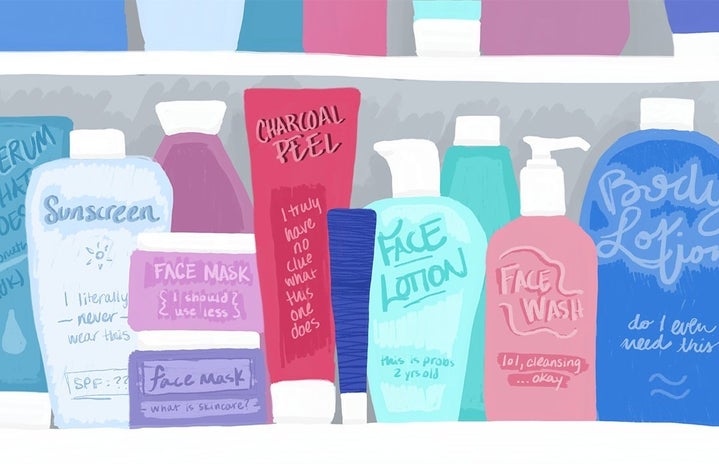We’ve all heard about the latest trend of transitioning toxic ingredients out of our beauty products. In the last few years, a focus has shifted in the beauty world towards more natural and sustainable product ingredients. Because really — who wants to clog their pores with mystery ingredients?
Sephora.com marks “Clean at Sephora” products with a seal of approval. The green stamp sits upon some of the most popular beauty products on the market. But what does this seal really mean?
Sephora’s website defines their “Clean Seal Products” as those that do not include a long list of “unwanted” ingredients.
No phthalates, formaldehydes, oxybenzone, triclosan, hydroquinone. The list goes on. What do these words even mean? Ingredient lists can be intimidating, especially when you don’t know what to look for.
I have been told that in regards to food and beauty products, if you can not pronounce the name of the ingredient, it probably isn’t the safest option. These mysterious ingredients can be toxic to either the body or the environment.
So, naturally, I would like my beauty products to not contain these strange words listed on the Sephora website of “unwanted” ingredients.
Thegoodfaceproject.com classifies clean beauty as a non-toxic product with transparent labels. Companies who openly display their full ingredient list offer me some peace of mind, at best, that although I may not understand each ingredient, I appreciate that none are being hidden.
Now that we know that clean beauty eliminates a long list of toxic ingredients, how can we ensure the products we are using fall under this category?
I frequently use the app “Think Dirty.” Opposite what the title claims, this app allows you to discover how “clean” and safe the products you are using are.
From makeup to skincare and even household cleaning products, “Think Dirty” will pull up an ingredient list of each product and provide a rating of how clean that product truly is. Along with the rating, it highlights the ingredients on the list in green, yellow and red to display which ingredients are the ones to look out for. An ingredient highlighted in red is definitely one to stay away from.
Although the clean beauty world may still be daunting to us all, it won’t hurt to try and introduce these non-toxic products into our routines. When adding new products to your makeup bag, check out products from Beautycounter, Saie, Kosas and ILIA for some of the most popular certified clean beauty products.
Is Clean Beauty the same as Natural Beauty?
Contrary to many people’s beliefs, clean beauty is not always natural. In fact, there are many synthetic ingredients that are not harmful to the body or environment. Clean beauty is also not to be confused with organic and natural beauty.
According to an article on mixedmakeup.com, clean beauty consists entirely of non-toxic ingredients. Natural and organic beauty consists of ingredients that are found pure in nature.
In my opinion, it’s a no-brainer to eliminate toxic ingredients from your skin care regimen. Although these products may cause more damage to your wallet than cheaper alternatives, your skin, and the planet, will thank you.


